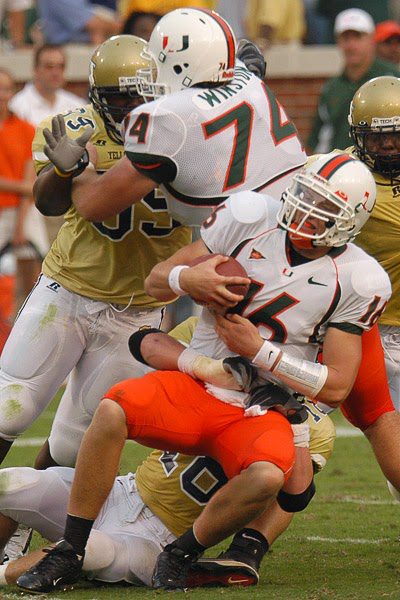| Nikon D2X, Sigma 120-300mm ƒ/2.8, ISO 400, ƒ/2.8, 1/1250 |
Action Shots
This blog post is about the action on the field and not reactions to that action.
Three things I think you should strive to have in all your action shots on the field:
- The Ball
- Expression
- The competition
Definition of Sport—an activity involving physical exertion and skill in which an individual or team competes against another or others for entertainment.
 |
| Nikon D4, Sigma 120-300mm ƒ/2.8, ISO 12800, ƒ/5.6, 1/1000 |
I like capturing the expressions of football players. An expression shows the “physical exertion” of players. So the key is to put me in a place where I will see their faces more often.
| Nikon D4, Sigma 120-300mm ƒ/2.8, ISO 12800, ƒ/5.6, 1/1000 |
When possible, I recommend covering one team. this way, you can show their team’s faces on offense and defense without running up and down the field over and over to get in front of them.
I generally try to shoot way down the field in front of the teams and prefer standing in the end zones. If they are far away, I use longer glass, like a 600mm lens, and when they are on the goal line, I may switch to my 70-200mm lens.
Why the endzone? Well, they are generally running in that direction and trying to cross the goal line. So when you are on the sideline, they may run slightly in your path, but they could also be running to the other sideline.
 |
| Nikon D4, Sigma 120-300mm ƒ/2.8, ISO 12800, ƒ/5.6, 1/1250 |
While my knees get sore from kneeling most of the time, I think you get better “athletic” moments. When you are low, you make the football players look much higher off the ground when they jump than when you stand. We like our star running backs to look like Roman gods flying when necessary. Remember, the purpose of the sport is entertainment. Flying because I am down low is a lot more exciting than from above, where they look closer to the ground.
 |
| Nikon D3S, Sigma 120-300mm ƒ/2.8 with 1.4 converters, ISO 6400, ƒ/4, 1/2000 |
Some of the best defense shots of the game are behind the line of scrimmage. Behind the offense, you capture the sacking of the quarterback. You can also catch the running back. You see, the defense moves the ball forward for their team when they create a loss for the other team’s offense.
I recommend renting long glass lenses rather than buying them. It would help if you had a lens between 300mm to 500mm to cover football, and adding 1.4 & 2X converters get you the longer lens.
Here is the list of gear I use in football
- (2) Nikon D4 Cameras
- 14-24mm ƒ/2.8 Nikkor
- 28-300mm ƒ/3.5-5.6 Nikkor
- Sigma 70-200mm ƒ/2.8
- 120-300mm ƒ/2.8 DG OS HSM | S carried in the Thinktank Glass Taxi™ [not in photo]
- Sigma 1.4 converter
- Nikon SB-900
- Manfrotto 294 Aluminum 4 Section Monopod
- Manfrotto by Bogen Imaging 323 RC2 System Quick Release Adapter w/200PL-14
- ExpoDisc
- Shure FP15/83 Lavalier Wireless System
- RØDE VideoMic Pro
- Zacuto Z-Finder
- AWP Knee Pads – Important to save your knees
- ThinkTank System for lenses using belt and harness
- ThinkTank Memory Card Holder
- ThinkTank Airport Security™ V 2.0 Rolling Camera Bag
- ThinkTank Credential Holder Tall V2.0
 |
| Nikon D3S, Sigma 120-300mm ƒ/2.8 with 1.4 converters, ISO 6400, ƒ/4, 1/2000 |
One last advantage of shooting from the end zones—is BACKGROUNDS. Your background is easier to keep clean and improve impact.
Have fun shooting this fall.


